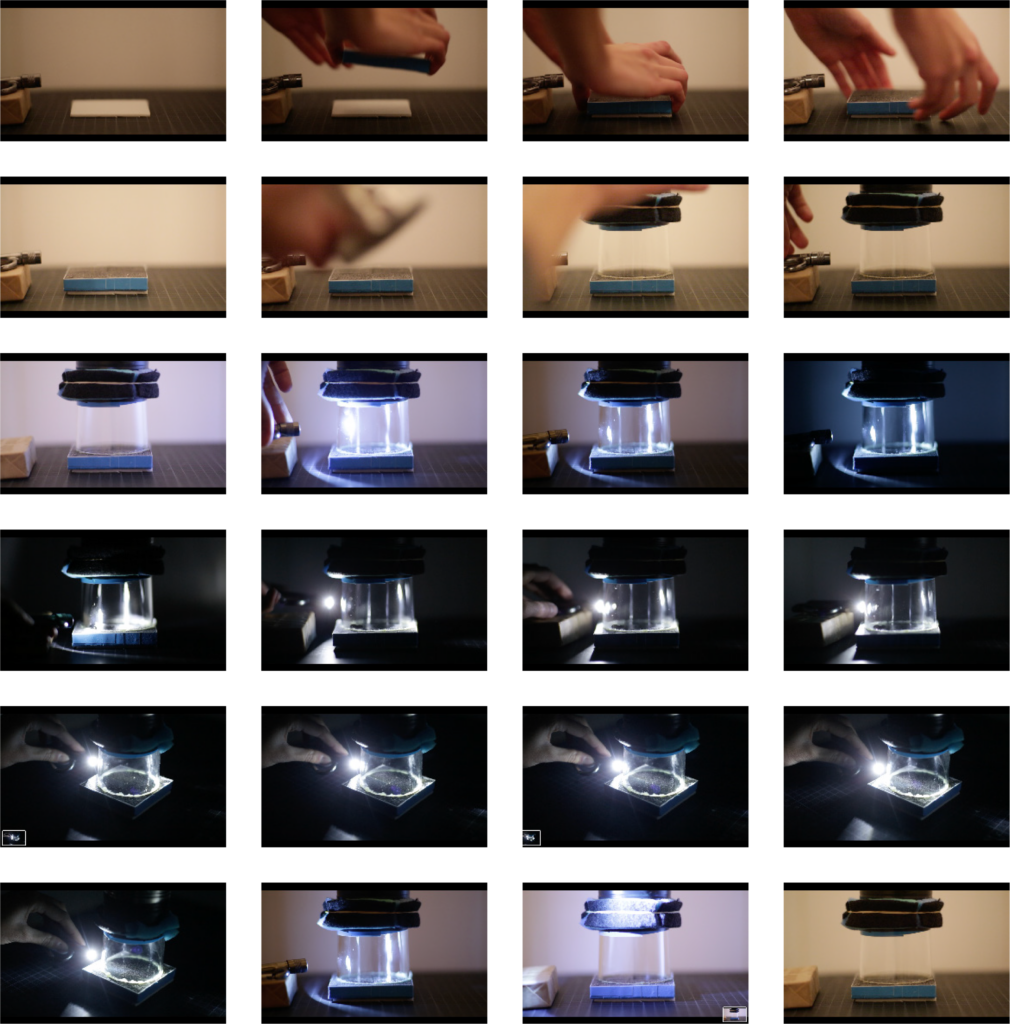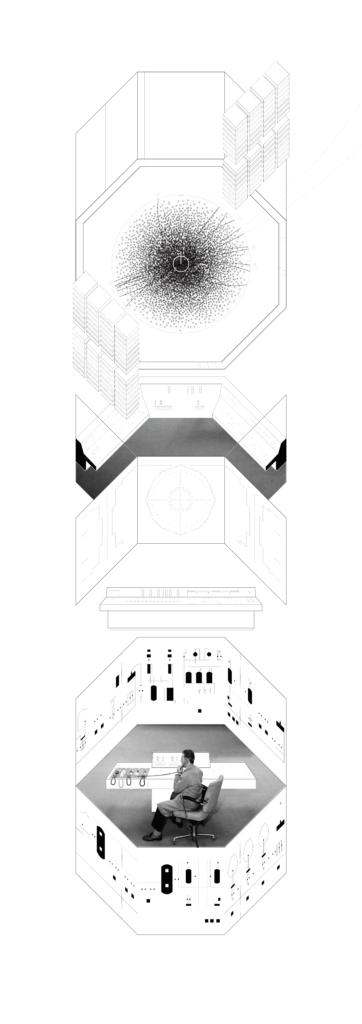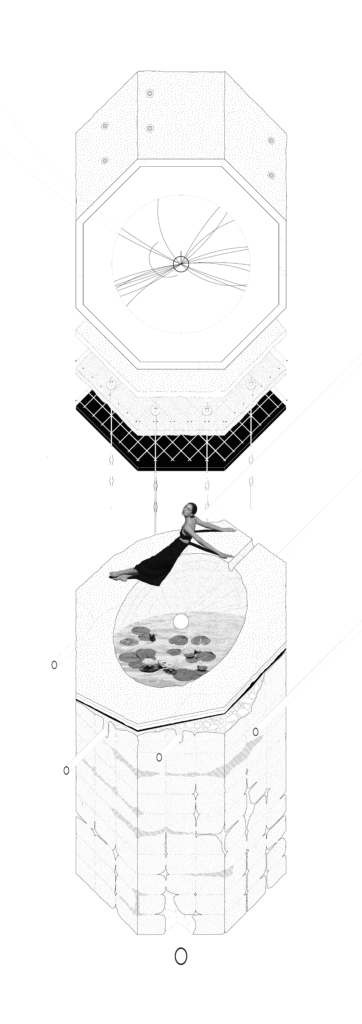TERRITORIALISING AN EXPERIMENT [36]
Dominika Kopiarova
The nature of practising science has drastically changed within several decades. World War II and Cold War-era and the militarisation of science and the industrialisation of scientific processes resulted in a shift from the gendered image of a lone genius inside a remote laboratory to what is now called the Big Science. The spatial concerns of Big Science regard its core principles of collaborative supranational effort, micro-regions of concentrated specialised knowledge and experiments that require a territorial scale. ‘It is curious that to examine the smallest details of nature, the largest instruments must be used.’[37]
The invention of a cloud chamber marked the beginning of modern particle physics. A cloud chamber is a particle detector used for visualising the passage of ionising radiation inside a sealed environment. A charged particle interacts with the gas leaving a trail of ionised gas particles – a cloud track.
For the Modi Operandi workshop, a DIY cloud chamber was made using an aluminium heat sink. A glass container with concentrated alcohol was placed over the heat sink, and a metal container filled with boiling water was placed on top. The temperature difference allowed the glass container to be filled with supersaturated alcohol vapour – hence the name cloud chamber, as it appears to contain a descending mist. In the ephemeral act of detecting the invisible, the particles became the acting agents inside the experiment. The experiment was recorded multiple times in a dark room with only a single source of direct light for the observation of collisions.
Territorialising the experiment concerns projecting its geometry onto the project site – the former surface quarries in Trieste. A Karst plateau allows extensive underground excavation to continue the entropic processes in the landscape. Here we can speculate an experiment that takes on a territorial scale.
Equally relevant to the space of the experiment is the space for the human – operator and spectator – illustrated by a fundamental part of the design, the control room. What is of interest is the room’s design and the physically direct and indirect spatial relation to the experiment. The portrayed control room was inspired by the 1970s electrical control room at CERN and the geometry of the Mundaneum as conceived by Paul Otlet and Henri La Fontaine.
The outlined themes and fascinations led to the development of the architectural project, which concerns itself with the territorial requirements of Big Science and the projected obsolescence of its experiments. Architecture is argued to be a relevant space where preconceived tensions between progress – obsolescence – disaster could play out productively and dive into architecturally little-theorised spaces. Hence, the conception of a Research Institute for Scientific Failures.



